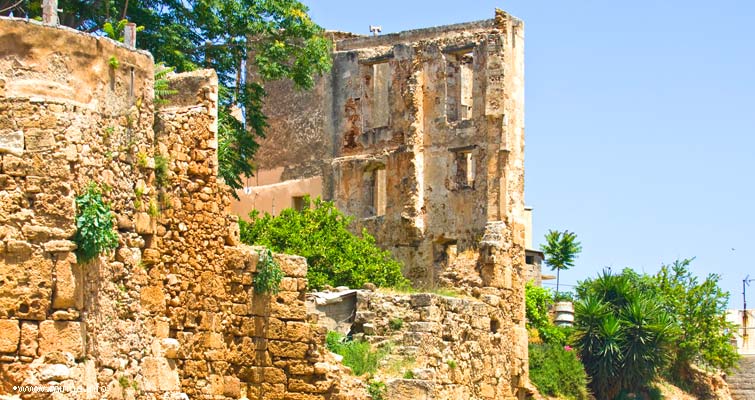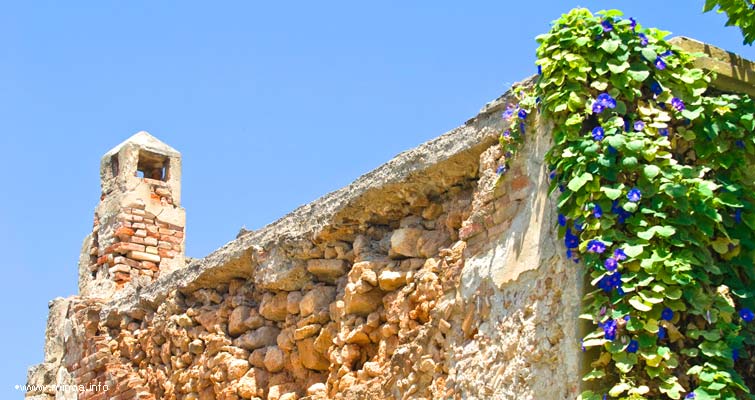 A Short History
A Short History
of the City of Chania
by Minoa.info / Juhani
Updated 13.03.2014
The
name Chania probably originates from the Greek name
Kythonia, and changed to
Chania over time. The first mention of
“Cania” dates back to year AD 1211. In a
document from AD 1252
the name of the village was “Canea”. Professor N.
Platonas has a
theory about the transformation from Kythonia to Chania,
according
to which the Arabs gave the village the Arabic name “Al Hanim”
meaning an inn. After the departure of the Arabs from Crete the
prefix “Al” was
dropped and the rest was translated back to Greek as “Hania” and into Latin as
“Canea”.
From
a historic point of view Kastelli hill is one of the most important sites. It
was already inhabited during the Neolithic period, and archaeological findings
around the hill, such as remnants of large buildings, point also to the Minoan
periods. According to a stone plate with linear A-text the hill was probably
inhabited by local rulers. A notable place of ceramic manufacturing called
Kythonia Workshop has also been found in Chania.
In
the early stages of its history Kythonia was a powerful city extending to the
White Mountains, and in constant battles with other cities. The city had the
right to its own money until the third century, at which time the Romans ended
the civil wars and peaceful times begun. At the turn of the first and second
millennium Kythonia was already almost the size of Chania.

…
First
Byzantine Period
Knowledge
of the Christian period is limited. Among the most important findings are the
remnants of a Basilica, near the Cathedral in the centre of Kastelli. The
“Document of Ireoklis” from the 6th century AD mentions Kythonia as
one of Crete’s main cities.
Arabic
Period (823-961 AD)
The
Arabs conquered Crete gradually during 821-824 AD. This was a tough time for
the Cretan population, as they were treated mainly as slaves. In 961 Nikiforos
Fokas liberated Crete back to Byzantine rule.
Second
Byzantine Period (961-1204 AD)
During
this period Arabic influence and remnants were systematically removed. The
defence of the Island was reorganized in order to prevent further Arab attacks.
A wall using building material from former city structures was built around
Kasteli. The wall itself is evidence of the heyday before the Venetian period.
Venetian
Period (1204-1645 AD)
In
1204 AD Crete was handed over to the Marquess of Monfera, who eventually sold
Crete to the Venetians for the price of a hundred silver coins. Henrico
Pescatore from Malta had a strong influence as Chania was made the governing
centre of the area, and the fertile surroundings of the city made it a
financial centre as well. Local and Venetian influence together made Chania
flourish socially, economically and culturally.
Turkish
Period (1645-1898 AD)
The
Turks landed on the Island near Gonia monastery in Kissamos, and the monastery
was burnt. They overtook Agia Theodor, fortified the Island west of Chania, and
after two months of battling took possession of Chania in August 1645. Churches
were turned into mosques, and new mosques were built for example in the
harbour. Spas and fountains were also built in the Turkish fashion. Many
Christians were executed; one of them was the bishop of Kissamos who died in
1821. In 1878 some rights were given to the Christians and in 1898 the
autonomous state of Crete was established – and Chania was made the capital
city.
Additional
info:
Weather in Chania and 7 day forecast:
freemeteo.com
Sources:
M. Anthrianakis. “The Old City of Chania”, 1997
M. Anthrianakis. “Halepa through its Churches”, calendar, 1998,
Publication of the Parents’ Association, 10th Elementary School
Emily Klathou – Bletsa “Chania beyond the Walls”, TEE 1998
Maria Anthreathaky – Vlazaky, “The County of Chania in Prehistoric
Times”, Hania 1982, p.p. 14-21

